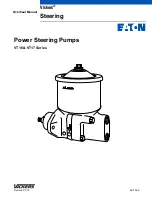
6
If no filter/ pressure regulator/ lubricator is installed in the compressed air system, then
pneumatic tools must be lubricated with 2 to 6 drops of tool oil at least once a day or
after every two hours of use. This must be done directly along the male coupler or oil
inlet provided for the purpose on the side of the tool’s housing.
Automatic lubrication is also possible using a mini oiler that you have to install between
the tool and the compressor. Make sure that the oiler is always filled with suitable oil.
1.
Tool 6. Quick coupler
2.
Quick connector 7. Lubricator
3.
Quick coupler 8. Regulator (0-8.5 bar)
4.
Air hose 9. Filter
5.
Quick connector 10. Air compressor
5. USE
WARNING: Ensure you read, understand and apply safety instructions
before use.
5.1 General operation instructions
Attach an air hose (not included) to the compressor’s air outlet. Connect the air
hose to the air inlet of the ratchet wrench.
The air hose must be long enough to reach the work area with enough extra
length to allow free movement while working.
Turn on the air compressor according to the manufacturer’s directions and allow
it to build up pressure until it cycles off.
Push and snap socket (not included) onto the anvil.
The wrench can be used in either forward or reverse direction by adjusting the
reverse switch.
To tighten, place the socket over the nut you wish to tighten.
Hold the handle firmly and place other hand on top of housing. Then gently squeeze
the trigger.
If tool requires more force to accomplish task in forward or reverse setting, verify that
the tool receives sufficient, unobstructed airflow and increase the pressure output of
regulator up to maximum air pressure rating of tool.
CAUTION
! Do not exceed tool’s maximum air pressure rating (6.3 bar).
If tool still does not have sufficient force at maximum pressure and sufficient airflow,
then a larger tool may be required. When the nut is tightened or loosened, release
the trigger.
5.2 Loading and operation




























